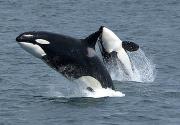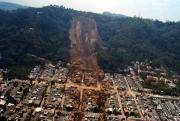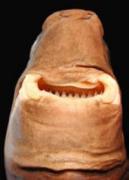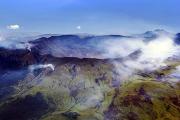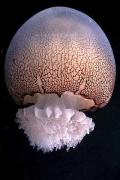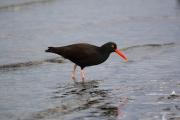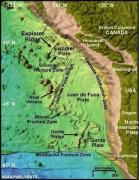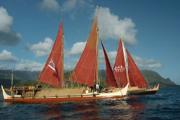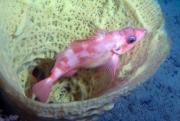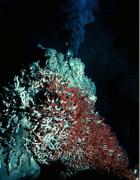Radio Program
Our regular Science and the SeaTM radio program presents marine science topics in an engaging two-minute story format. Our script writers gather ideas for the radio program from the University of Texas Marine Science Institute's researchers and from our very popular college class, Introduction to Oceanography, which we teach to hundreds of non-science majors at The University of Texas at Austin every year. Our radio programs are distributed at to commercial and public radio stations across the country.
If you move to a new part of the country, you’ll eventually start to sound a bit like the natives. Your accent might shift a little, and you’ll pick up the local dialect — the language and speech patterns that define that area.
The same thing appears to be true for killer whales. Some recent research found that orcas that are kept around bottlenose dolphins eventually start to “talk” more like the dolphins.
In November of 1929, a strong earthquake rattled the Atlantic Ocean south of Newfoundland. On shore, the quake knocked down a few chimneys and blocked some roads, but otherwise caused little damage on its own.
On the ocean floor, though, it triggered a giant landslide. Perhaps 50 cubic miles of sediments tumbled down the slopes, creating a tsunami. The waves soon crashed into Newfoundland and Nova Scotia, killing about 30 people and damaging or destroying dozens of villages.
Few creatures are foolhardy enough to take on a great white shark — much less try to lure one in. Yet a shark that’s no longer than your arm has been known to do just that.
The cookiecutter is among the smallest of all sharks. Adults are only about 16 to 20 inches long. They inhabit warm waters around the world, mostly near islands.
In October of 1815, a ship near the coast of India encountered an amazing sight: a “raft” that stretched for miles across the Indian Ocean. It consisted of ash, topsoil, dead trees, and other debris from a volcano that blew its top six months earlier — the most powerful eruption of the past 2,000 years or more. It killed almost a hundred thousand people, and altered the climate across much of the planet.
A jelly ball sounds irresistible — until you realize the flavor isn’t grape, strawberry, or peach. That’s because “jelly ball” is a nickname for a type of jellyfish — the cannonball. It’s about as wide as a small pizza, and shaped like a mushroom. But even though it’s not that appetizing to most American palates, the cannonball has become a popular target for the fishing industry along the southeastern coast of the United States.
The American oystercatcher is a brawny shorebird. An adult stands about a foot-and-a-half tall and has a wingspan of up to three feet. Yet the oystercatcher is also among the most devoted of parents.
When most people talk about the “next big earthquake,” they usually mean a major temblor along the San Andreas Fault in southern California. But research over the last few decades suggests that the next big one might strike a little farther north — from northern California to southern British Columbia.
It’s a couple of thousand miles from the islands of the central Pacific Ocean to New Zealand. That’s an easy jaunt for modern transportation. For the first people to make the trip, though, it was a journey of weeks. And it might not have been possible at all without a temporary change in climate.
The people of Polynesia were master navigators. They used the stars, the weather, and even ripples on the ocean to find their way across long distances. That allowed them to colonize many islands in the central Pacific.
If your flower garden gets wiped out by a hard freeze, you can either plant new seeds and wait for them to grow, or you can plant whole flowers. They both work, but one of them gives you faster results.
Biologists are testing the “faster” method to restore sponge beds in the Florida Keys. They’re transplanting sponges from healthy beds to some that have been damaged by red tides and other causes. The hope is that the transplants will cut years off the time required to rebuild the beds.
A slice of the ocean floor off the coast of Washington State is like a scene from a fantasy land. Tapered spires climb high above the seabed, with some of them shooting boiling-hot water into the frigid depths. Tubeworms and other exotic life surround the spires. And small tremors jiggle the whole tableau several times a day.

